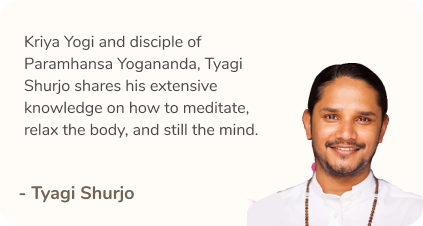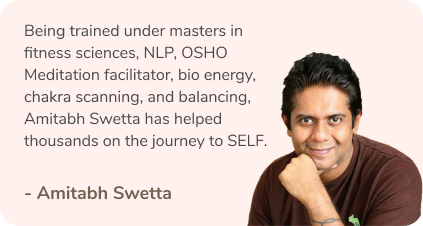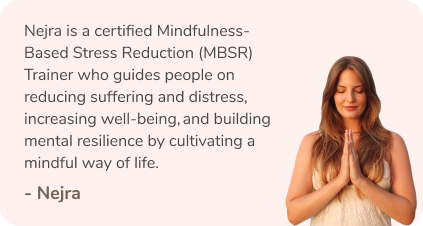Most of our days are filled with tasks and responsibilities that keep piling on top of each other like a never-ending loop. We wake up, get ready for work, tackle the stresses of office life, come home to tackle the stresses of home life, and then we do it all over again. However, there is a way to escape this monotony. We can find peace and calm in this rhythm by seeking greater intention and awareness in our every day. One simple way is through Kundalini meditation.
Kundalini meditation is believed to have the ability to awaken your potential for spiritual awareness. By moving energy through the seven chakras in our body, Kundalini meditation enhances the potential of every human being by releasing the stress from living on “auto-pilot.” It is not set on beliefs or religion, but on energy that is already present inside of us, which is balanced through a deep mind-body awareness. The practice of Kundalini meditation clears away the clutter of the world and gives us access to our inner selves. Similar to a shower that cleanses our body every day, the practice of Kundalini meditation cleanses the mind and allows us to act from a place of purpose rather than reacting to stressful thoughts and environments.

The premise of Kundalini meditation is the belief that everyone has an extremely powerful coiled energy, a coiled snake, at the base of the spine. As this snake, also known as the Kundalini, uncoils, we release energies that block us and unlock our full potential. The practice of Kundalini employs breathwork, Kundalini yoga poses, mantras, and active meditation to shift from a limited mindset to an abundance mindset that helps manifest the life you desire.
The Benefits Of Kundalini Meditation
Since the practice engages in a diverse series of movements and breathwork, Kundalini meditation can help with emotions like sadness, stress, anxiety, and fatigue. It can help you attain:
- Increased mindfulness and compassion
- Improved communication with self and others
- Improved cognitive function
- Increased core strength, flexibility, and lung capacity
- Reduced stress and anxiety
- Inspiration and creativity
- A clear mind
- A more developed sense of self
- Greater purpose and intent in your actions
The Practice Of Kundalini Meditation
Kundalini meditation is a comprehensive practice that has an array of variations and versions. But if you’re new to the practice, follow along with this basic guided meditation below. Start with a 5-minute practice and slowly build up to it instead of overwhelming yourself right away.

1. Find A Quiet Spot
While Kundalini meditation can be performed anywhere, it’s ideal to find a calming and quiet place that is comfortable and devoid of distractions. Ensure you’re wearing comfortable, loose clothing that doesn’t restrict.
2. Select Your Time
Depending on your preference, choose the time that suits you best. You can choose to practice Kundalini meditation in the morning before you start the day or at night before bed. Just refrain from meditating right after eating, as your body will need time to digest the food.
3. Get In The Right Position
Sit cross-legged on the floor with your back straight or you can sit on a chair with the weight of your body resting on your feet. You can sit on a blanket or a pillow underneath you. Close your eyes and focus your gaze on the centre of your eyebrows as you start your practice.
4. Choose The Length
For a beginner, it is suggested to start with 2-5 minutes. You can work your way up to 11 minutes, 15 minutes, 22 minutes, 31 minutes, and further on, leading up to even two hours and beyond. Pick a duration that seamlessly amalgamates in your schedule.
5. Choose A Kundalini Mantra
A Kundalini mantra or chant will help you focus and keep you aware in the present moment. A popular beginner mantra is “Sat Nam,” which translates to “truth is my identity.” As you inhale, say “Sat” and “Nam” on the exhale. Chanting directs your energy and helps break old patterns. The mantra needs to reflect the state you want to attain rather than the one you are in the present moment.

6. Focus On The Breath
Kundalini meditation should help you slow down and regulate your breath. The practice teaches you to count to around 7 seconds for every inhale and exhale. Pause for a few seconds after every breath and stay conscious of your meditation posture.
7. Practice Breathing And Chanting
During your practice, notice how your breath is flowing through your body and bringing a sense of calm and relaxation. Whenever you feel like your mind is wandering, bring it back to the present moment by focusing on your breath and chanting.
When learning the practice of Kundalini meditation, always start small and grow from there. Incorporating meditation into your daily life is not easy but a few minutes a day can help you quiet the mind and embrace a positive outlook. With time, it will be easier to sit in this meditative state and be comfortable with being inside your mind. Just take it one day at a time.
Read More: What Are Microjoys? Can They Boost Your Happiness?
Like & Follow ThinkRight.me on Facebook, Instagram, Twitter, Pinterest and Telegram to stay connected.






























